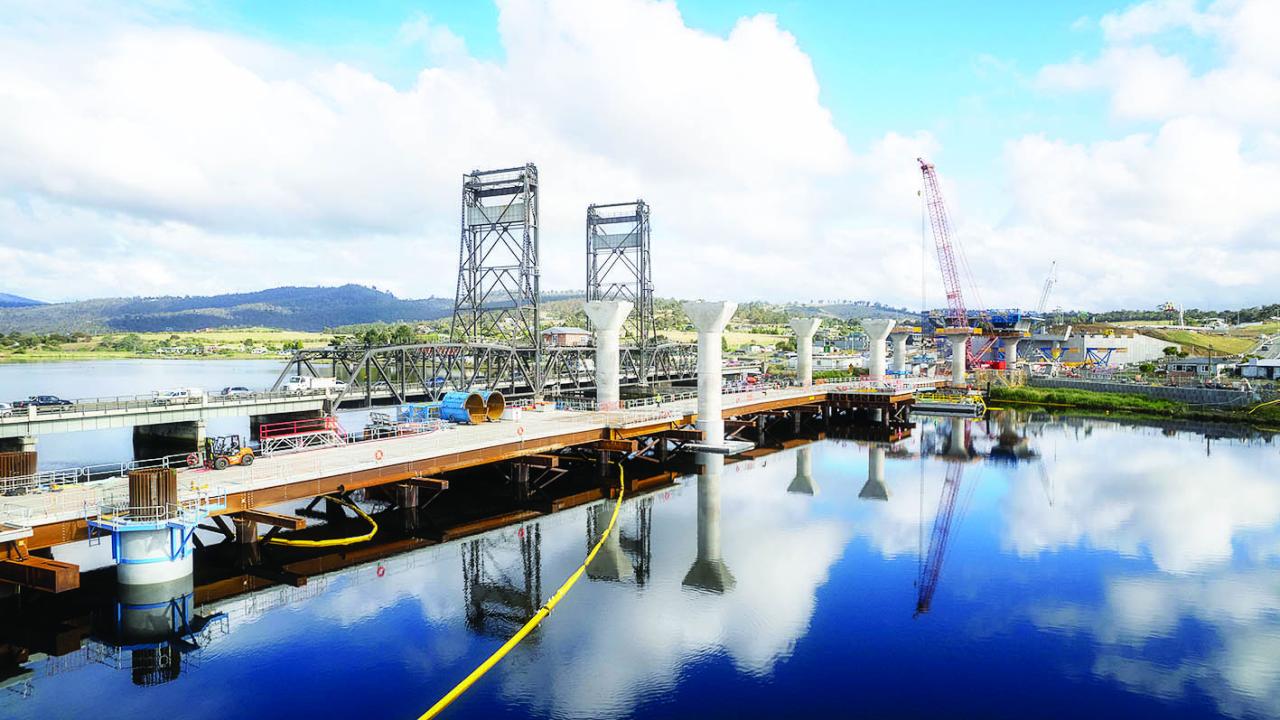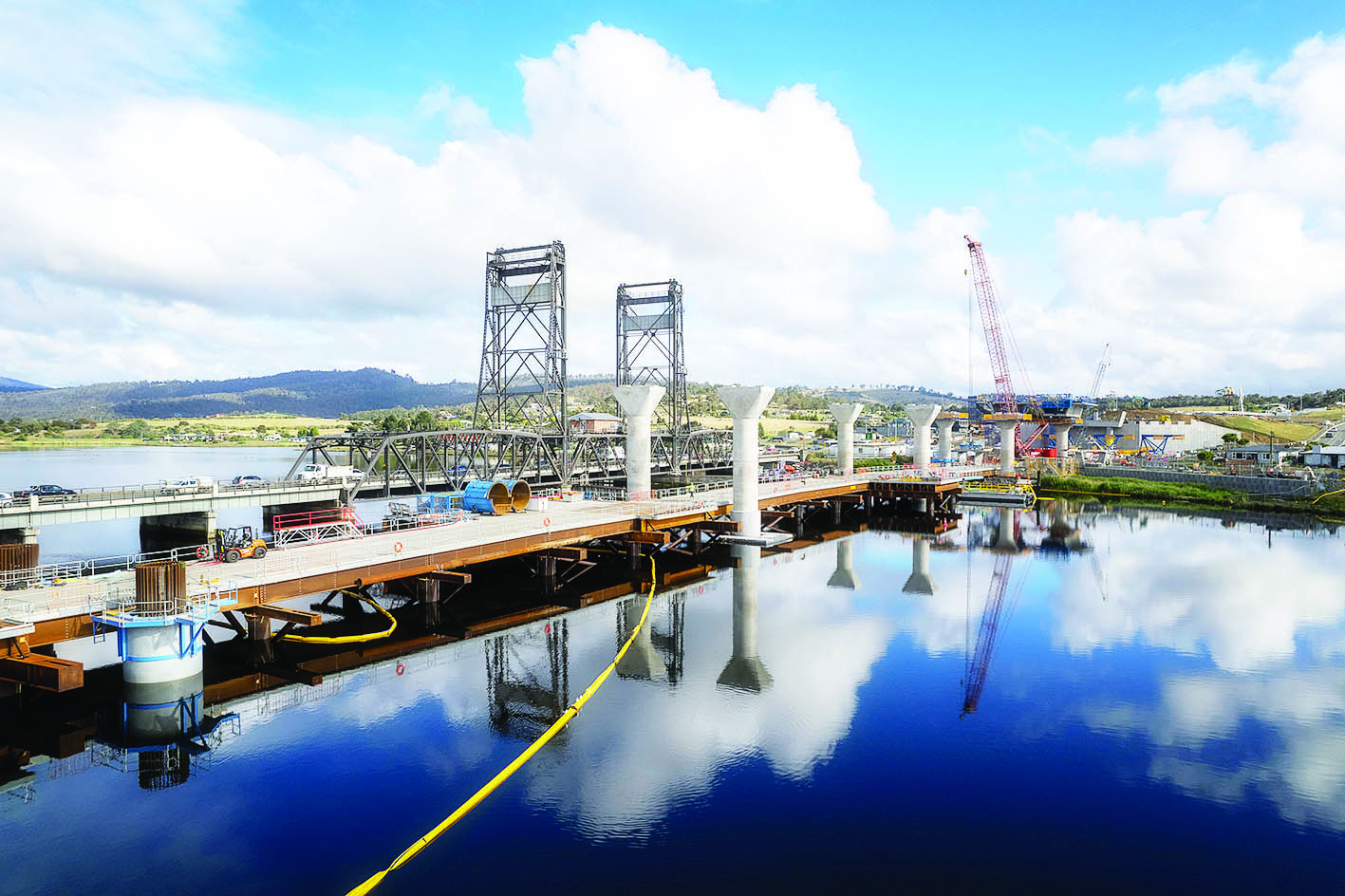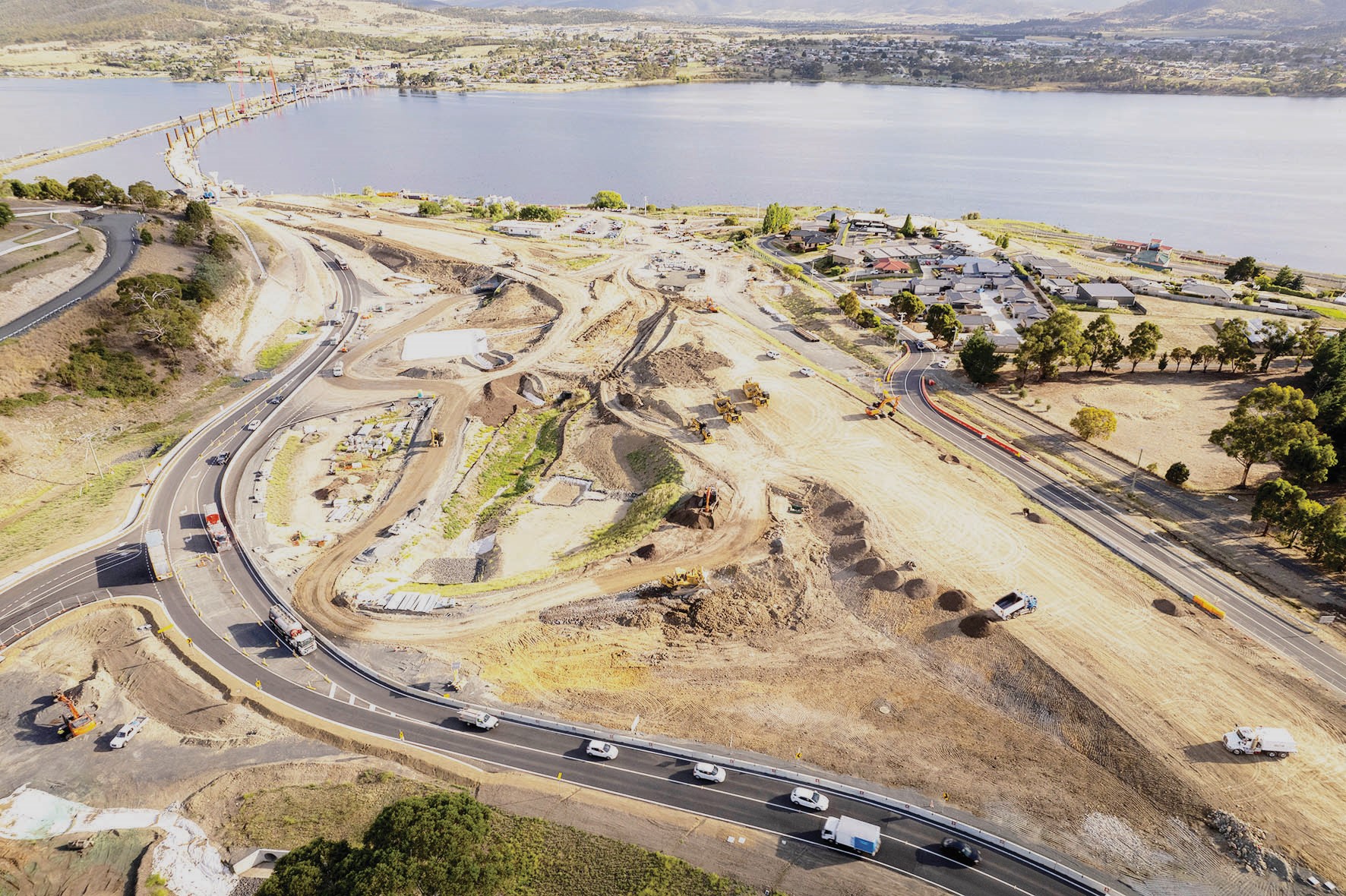Pictures tell story of progress on new Bridgewater Bridge

SOMEHOW it’s all here in these images from Matthew Bissett, the project’s official photographer.
We asked him to pick images of the new Bridgewater Bridge that had struck him as interesting in some way, and we boiled those down to just two, one from each side of the Derwent.
What strikes the viewer immediately about the two bridges together is that steel has largely been replaced by concrete in construction. Although it’d be more accurate to say, as you see with the pile just above the waterline on the left, it’s now concrete and steel rebar together.

It’s staggering to think this construction, with just a few metres sticking out of the water, actually reaches very deep into the mud, sands and gravel, in some cases 90 metres below.
The photos also reveal the scale of the build.
Take a look at the size of the construction worker at the centre as he walks between the huge uprights that will keep aloft the multiple lanes of the deck.
That deck is now being formed by the cranes on the far right of the image.
Steel also forms the beams that are the temporary structure that is essentially the scaffolding from which the new bridge is being built. The uprights of the old steel liftspan bridge seem puny by comparison.
Indeed, the single-storey suburban home near the foreshore on the right side of the photo is like a doll’s house next to those nine metres of highway concrete abutment wall beside it.
Below, the River Derwent appears passive, but it does offer a near perfect mirror image of the sky and clouds.
At the end of the project, a year from now, this temporary bridge and its steel braces and concrete deck will be gone, the river left uncluttered. All that will remain will be the upright piers and long soaring arch of bridge sitting some 16 metres above the water.
Now look at the photo again, mentally removing the old liftspan bridge from the background, along with the clutter of cars and temporary buildings.
A year from now, it’s going to be a very different photo.
On the Granton side, it’s less about bridgeworks than it is about roadworks and the emerging interchange of not one but three highways -- the Brooker, the Lyell and the Midland.
And then, there‘s two significant two-lane roads, Black Snake Road and the original main road to Austins Ferry.
How to do it, to make them intersect? A roundabout of course.
You can see the highway path starting in the bottom right of the frame, and taking a long curve across to the left to the new bridge.
The sealed section making the more pronounced curve in the left of the photo will form part of a section of a very large new roundabout that will enable all these beginnings and ends come together.
Look carefully, and you can see the multiple drainage channels being formed, anticipating the water that will come down this natural watercourse off the hillsides. A large drain is visible at the northern end of the green patch in the centre of the photo.
To the right side, trucks are pouring soil along what will be the main highway’s edge, in anticipation of hydroseeded grass beds off each side of the bitumen.
What is now brown will soon be green. Another very different photo is being formed.





Add new comment